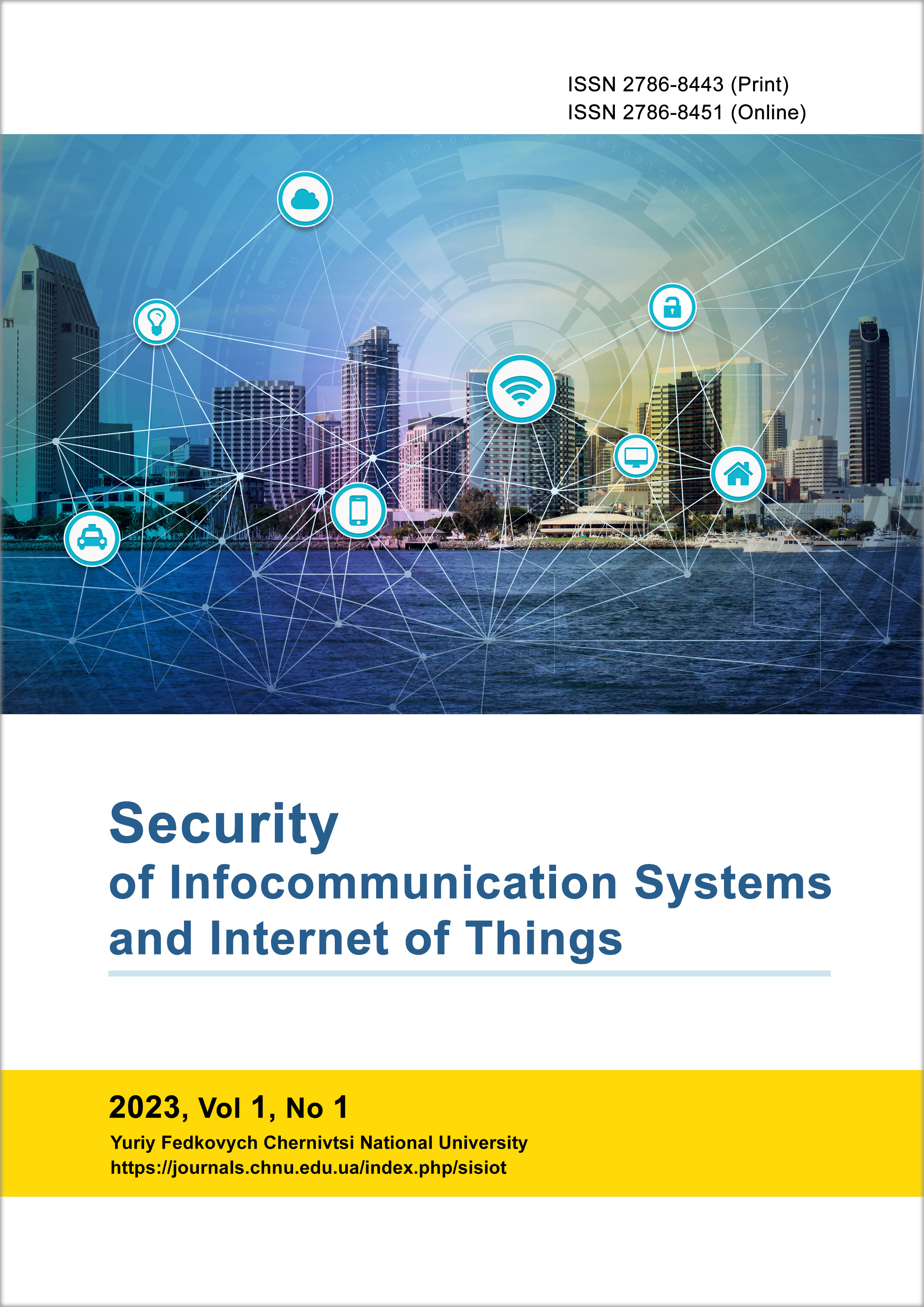Systematization of Cyber Threats in Maritime Transport
DOI:
https://doi.org/10.31861/sisiot2023.1.01008Keywords:
maritime industry, cyber-attack, portAbstract
The paper proposes a classification of cyber-attacks at the present stage of maritime transport development. A classification system for ship blocks and port infrastructure has been developed. The vulnerabilities of the global navigation satellite system are analyzed; this system is the most important subcategory of maritime vehicles and may be a target for cyber-attacks. The paper shows that the rapid spread of cybercrime occurs due to the rapid development of new technologies and their integration into ship and port infrastructures. The main elements of the maritime transport infrastructure are considered: port infrastructure and ship infrastructure. IoT and Big Data can be examples of the spread of such systems. The ship's IT infrastructure, ship's electromechanical and electronic systems, communication systems, automatic identification systems, ship information system are considered. In the port infrastructure, port security systems, port equipment systems, port communication systems are analyzed. The main types of cyber-attacks to which the ship and port parts of the industry are exposed are considered. The signs of attacks on the Internet of things systems on ships and in ports are considered. The trend towards greater system integration cannot be reversed for economic reasons. Such integration makes it possible to reduce the size of the team, build autonomous ships, work in the smart ports system, and makes it possible to save various resources (time, human, fuel and organizational). The paper considers the practical directions and challenges facing the industry in terms of improving the security of maritime transport in cyberspace.
Downloads
References
B. Mednikarov, Y.Tsonev and A. Lazarov Analysis of Cybersecurity Issues in the Maritime Industry. Inf. Secur. 2020, 47, 27–43.
Kapalidis, P. Cybersecurity at Sea. In Global Challenges in Maritime Security; Springer: Berlin/Heidelberg, Germany, 2020; pp. 127–143.
Tam, K.; Moara-Nkwe, K.; Jones, K. The Use of Cyber Ranges in the Maritime Context. 2020. Available online: https://pearl.plymouth.ac.uk/handle/10026.1/16067 (accessed on 11 November 2021).
USCG.mil. 2022. United States Coast Guard Cyber Strategic Outlook. [online] Available at: https://www.uscg.mil/Portals/0/Images/cyber/2021-Cyber-Strategic-Outlook.pdf [Accessed30 June 2022].
Automatic identification system. Available online: https://en.wikipedia.org/wiki/Automatic_identification_system (accessed on 11 November 2021)
Bou-Harb, E.; Kaisar, E.I.; Austin, M. On the impact of empirical attack models targeting marine transportation. In Proceedings of the 2017 5th IEEE International Conference on Models and Technologies for Intelligent Transportation Systems (MT-ITS), Naples, Italy, 26–28 June 2017; pp. 200–205
Siddiqi, Murtaza Ahmed, Wooguil Pak, and Moquddam A. Siddiqi. 2022. "A Study on the Psychology of Social Engineering-Based Cyberattacks and Existing Countermeasures" Applied Sciences 12, no. 12: 6042. https://doi.org/10.3390/app12126042
Akpan F, Bendiab G, Shiaeles S, Karamperidis S, Michaloliakos M. Cybersecurity Challenges in the Maritime Sector. Network. 2022; 2(1):123-138. https://doi.org/10.3390/network2010009
Ferreira, A., & Lenzini, G. (2015, July). An analysis of social engineering principles in effective phishing. In 2015 Workshop on Socio-Technical Aspects in Security and Trust (pp. 9-16). IEEE.
Lagouvardou, S. Maritime Cyber Security: Concepts, Problems and Models; Kongens Lyngby: Copenhagen, Denmark, 2018.
Jensen, T., 2017. Cyber-attack hits shipper Maersk, causes cargo delays - Reuters [WWW Document]. URL https://www.reuters.com/article/us-cyber-attack-maersk/cyber-attack-hits-shipper-maersk-causes-cargo-delaysidUSKBN19J0QB (accessed 4.19.19).
Formby, D.; Durbha, S.; Beyah, R. Out of control: Ransomware for industrial control systems. In Proceedings of the RSA Conference, San Francisco, CA, USA, 14–17 February 2017.










